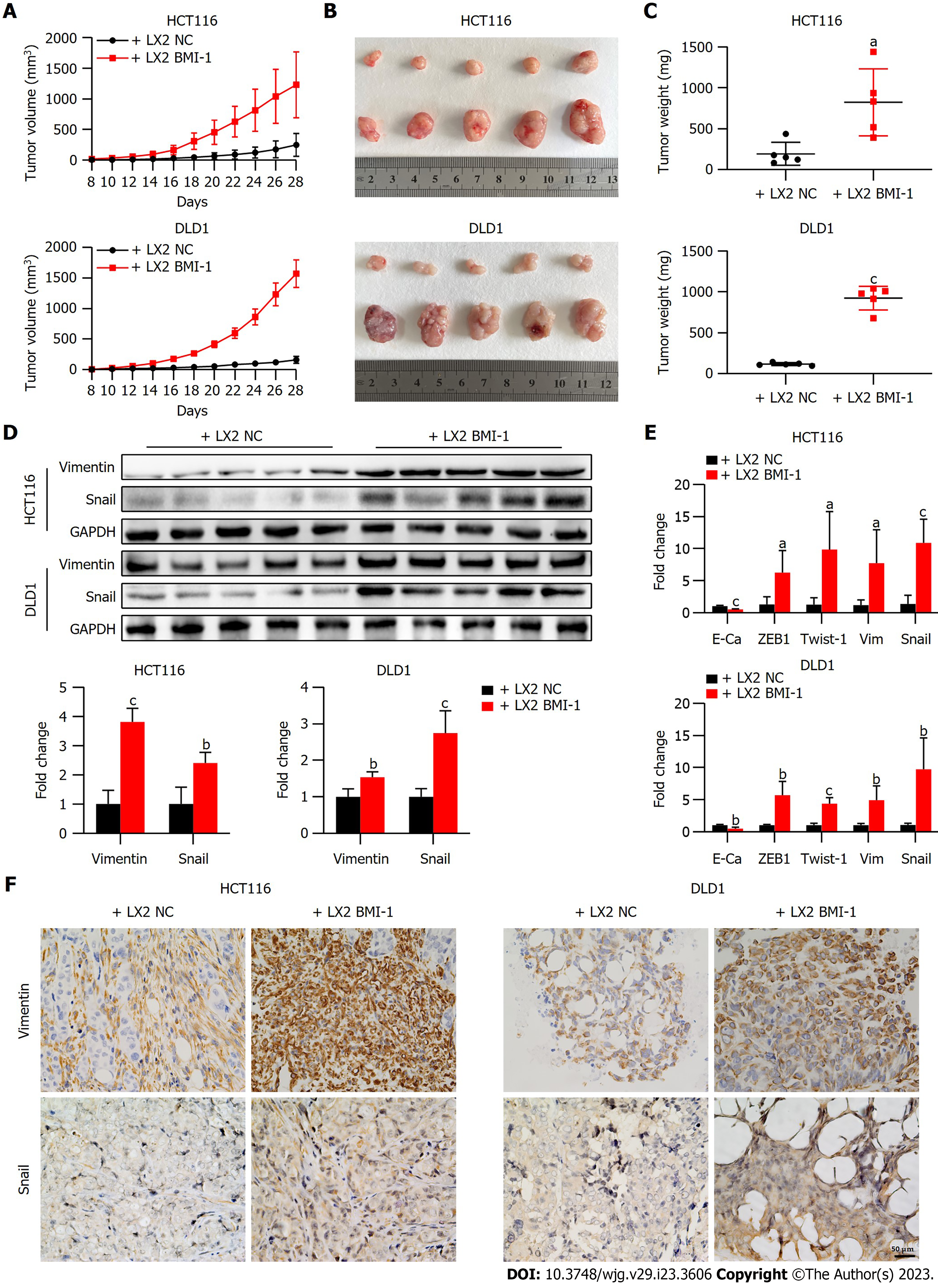Copyright
©The Author(s) 2023.
World J Gastroenterol. Jun 21, 2023; 29(23): 3606-3621
Published online Jun 21, 2023. doi: 10.3748/wjg.v29.i23.3606
Published online Jun 21, 2023. doi: 10.3748/wjg.v29.i23.3606
Figure 5 BMI-1 overexpressed LX2 promotes tumor growth of colorectal cancer in vivo.
A: Colorectal cancer cells (HCT116 or DLD-1) and LX2 cells (negative control [NC] or BMI-1 overexpressed) were co-implanted subcutaneously into the flanks of nude mice. After 7 d, tumor volume was measured every 2 d from 8 d to 28 d; B: Tumors were photographed at 28 d; C: Tumors were weighed (n = 5); D: Western blot assay of vimentin and Snail expression in mouse tumors in the different groups, and the fold changes were calculated; E: Quantitative polymerase chain reaction assay of the expression of epithelial-mesenchymal transition-related markers in mouse tumors in the different groups; F: Immunohistochemistry analysis of vimentin and Snail expression in mouse tumors. aP < 0.05, bP < 0.01, cP < 0.001 vs LX2 NC. GAPDH: Glyceraldehyde-3-phosphate dehydrogenase.
- Citation: Jiang ZY, Ma XM, Luan XH, Liuyang ZY, Hong YY, Dai Y, Dong QH, Wang GY. BMI-1 activates hepatic stellate cells to promote the epithelial-mesenchymal transition of colorectal cancer cells. World J Gastroenterol 2023; 29(23): 3606-3621
- URL: https://www.wjgnet.com/1007-9327/full/v29/i23/3606.htm
- DOI: https://dx.doi.org/10.3748/wjg.v29.i23.3606









